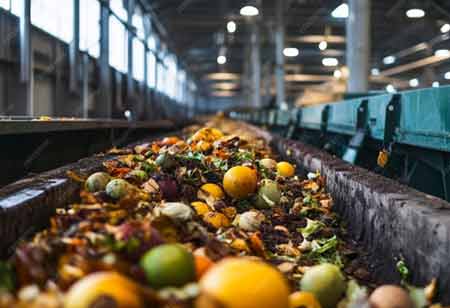THANK YOU FOR SUBSCRIBING
Be first to read the latest tech news, Industry Leader's Insights, and CIO interviews of medium and large enterprises exclusively from Food and Beverage Tech Review
Food Safety Trends for 2023
The food industry is a highly dynamic segment of society. It fluctuates annually and is susceptible to client preferences and health concerns. If one thing revolutionized the entire dynamic.

By
Food and Beverages Tech Review | Monday, April 24, 2023
Stay ahead of the industry with exclusive feature stories on the top companies, expert insights and the latest news delivered straight to your inbox. Subscribe today.
After the pandemic, the food industry adopted a more rigorous approach to food safety and entered the "new normal."
FREMONT, CA: The food industry is a highly dynamic segment of society. It fluctuates annually and is susceptible to client preferences and health concerns. If one thing revolutionized the entire dynamic of the food sector, especially regarding food safety, it would be the introduction of COVID-19. These phenomena changed every food safety trend foreseen during the past several years and drastically impacted how firms handle food safety in their daily operations.
By the end of 2022, as the economy adjusts to the new standard, the food business has regained its footing and increased revenues by $899 billion. Consumers may anticipate a more diverse and stringent approach to food safety as food manufacturers develop more efficient methods to safeguard the supply chain.
As the industry becomes more aware of the potential problems a pandemic could cause, the supply chain system can anticipate tougher food regulations to ensure food safety and safeguard public health.
How has the safety of food evolved?
Over the years, food safety organizations have prioritized the safety of the food supply chain due to the numerous food safety incidents. Incidents such as the 1993 outbreak of E.coli 0157:H7 shocked the business and pushed many agencies to coordinate government efforts with consumer safety and interest.
With a greater understanding of the behavior of viruses and the complexity of foods, the food industry has developed additional methods to safeguard public health. Central government agencies have moved their focus from a system where customers are responsible for cooking food correctly to improving food safety rules to ensure that food released to the public is safe.
The Food Safety Modernization Act of 2011 paved the path for risk-based preventative interventions that minimize the probability of foodborne illness outbreaks. In addition, agencies now have acceptable standards for implementing food service safety improvements and fines for noncompliance.
The food business has begun to embrace technology and software applications to create a more open and accountable food supply chain in addition to complying with regulations. For a more sustainable operation, food companies have eliminated paper and streamlined their procedures to make it easier to combine with other programs.
Food safety trends in the U.S.
After the Food Safety Modernization Act was passed in 2011, considerable changes occurred in the United States. It was regarded as one of the most extensive improvements to the nation's food safety system and altered its approach.
Consequently, to tackle the challenges posed by the ongoing pandemic, the U.S. supply chain continues to develop more intelligent solutions.
Following are some of the recent trends in food safety in the United States:
A more intelligent approach to food safety by the FDA: As part of the goal of the Food Safety Modernization Act and the FDA's initiative "The New Age of Smarter Food Safety," the food agency will continue to adopt more innovative methods to food safety. This program's center is establishing a technology-driven traceability system, intelligent tools for addressing outbreaks, more contemporary business models, and a food safety cultural awareness campaign.
This development is anticipated to pave the way for improved predictive assessments for food safety and more effective and efficient responses to issues and outbreaks. The technology-driven movement strives to make the entire supply chain more transparent to customers throughout the production phases.
The approach to food service after a pandemic: Even if the globe is learning how to resist the virus and the number of infections steadily declines, the virus will continue to exist. As a result, food companies are discovering more measures to safeguard customers. Companies are expanding their offerings beyond alcohol and thermal sensors. A stronger cleaning and sanitation regimen and a more active approach to preventing cross-contamination are emphasized.
Environmental responsibility of operations: Sustainability remains a leading trend among food firms while not being new. Communities and the food sector view total sustainability as an excellent performance indicator. In the coming years, sustainability will become a priority for many businesses. Given that enterprises in the food industry are among the most reliant on nature, their contributions to sustainability initiatives are seen as crucial.
I agree We use cookies on this website to enhance your user experience. By clicking any link on this page you are giving your consent for us to set cookies. More info


However, if you would like to share the information in this article, you may use the link below:
https://www.fbtechreviewapac.com/news/food-safety-trends-for-2023-nwid-1563.html





